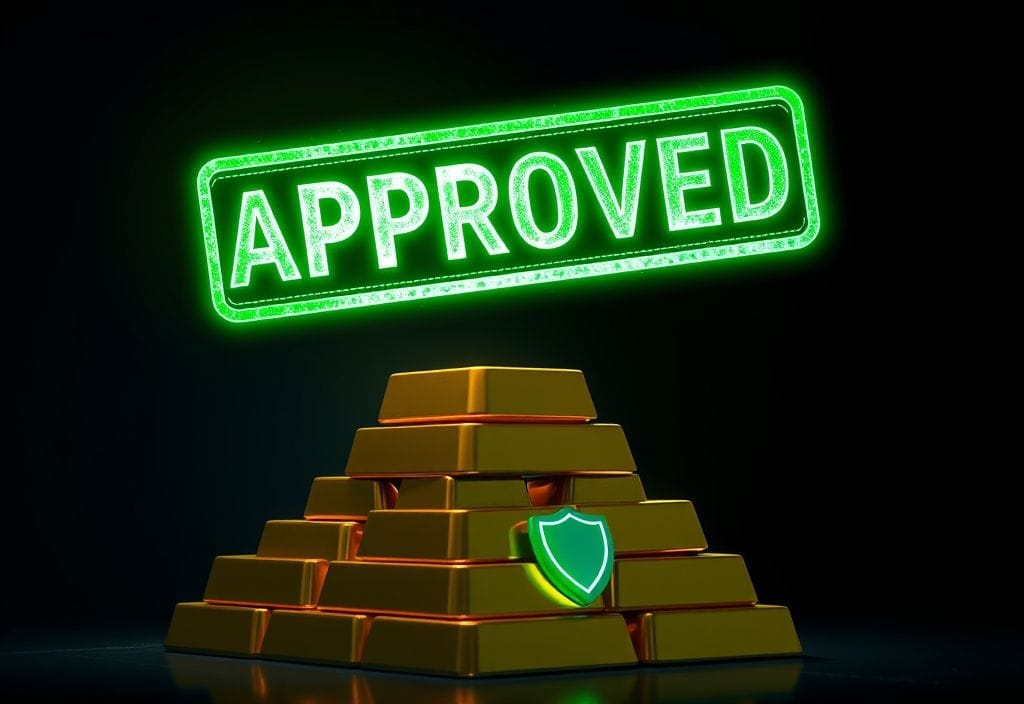You’ve spent years building powerful cybersecurity tech that beats anything on the market. But when you present to investors, something goes wrong. Your slides have buzzwords and vague graphs, and their interest fades fast. Most investors look at over 100 pitch decks monthly and spend less than two minutes on each. A weak pitch can kill your chances in cybersecurity, where billion-dollar breaches are real. You need a Cybersecurity Pitch Deck to Investor PPTX that speaks their language and shows your value. This guide will help you build a deck that gets real attention and funding.
1. Winning Investor Trust Through Strategic Storytelling

Investors fund outcomes, not technology. Your deck must connect innovative tech to generational returns. Cybersecurity venture capitalists demand three non-negotiables: scalable defensibility, urgent market pain, and rapid dominance potential. They care about risk mitigation, total addressable market expansion, and exit pathways. Leading with technical features instead of financial impact guarantees rejection. Your first three slides must answer why this solution, your team, and this exact moment matter.
Build Instant Credibility with Data That Speaks for Itself
Venture capitalists decide fast. Your title slide needs a visceral hook. Try “Ransomware paralyzed 900 hospitals last year; we prevent it in 8 seconds.” The problem slide must quantify pain: “Banks lose $400M monthly to undetected deepfake fraud.” On your solution slide, highlight your unique edge using specific performance data, not vague buzzwords. Instead of saying “advanced AI threat detection,” show how your tech cuts response time from 48 hours to 9 minutes. Precise numbers create instant credibility.
Show Why Waiting Isn’t an Option Anymore
Frame your solution against irreversible cyber threats—Showcase 2023’s 300% surge in AI voice cloning attacks. Highlight 2024 regulations imposing $2M fines for compliance gaps. Position 2025 as your dominance year with “99% breach prevention at one-tenth industry cost.” This demonstrates inevitability, not speculation. Investors fund trajectories where delay means catastrophic loss.
Prove You’re Built to Scale and Impossible to Clone
Don’t just say your tech is “defensible.” Prove it. Mention patent applications, proprietary algorithms, or exclusive access to sensitive datasets. To demonstrate scalability, use real metrics like “connects with 48 security platforms via a single API” or “rolls out to 500 endpoints in under 72 hours.” Investors want tangible proof that your system can’t be easily cloned and can handle enterprise demand.
Investor Priority Alignment Metrics
| Metric Type | Weak Pitch Example | Strong Pitch Example | Investor Priority |
|---|---|---|---|
| Market Size | “Huge TAM” | “$28b SMB segment by 2025 (12% CAGR)” | High |
| Defensibility | “Proprietary AI” | “3 patents pending, 9TB attack data” | Critical |
| Traction | “Growing fast” | “$1.4M ARR, 42% quarterly growth” | Urgent |
| Unit Economics | “Strong margins” | “CAC: $8k, LTV: $55k” | Dealbreaker |
| Implementation | “Easy deployment” | “3-click setup, 97% adoption rate” | High |
| Threat Relevance | “Modern solution” | “Prevents 94% of Q3 2024 zero-days” | Critical |
Avoiding Psychological Pitfalls
- Technical overload: Lead with financial impact, not encryption algorithms
- Unsubstantiated claims: Replace “industry-leading” with third-party validation
- Solution-first framing: Investors care about pain before your product
- Ignoring objections: Address regulatory risks and competition upfront
- Team obscurity: Spotlight cybersecurity credentials with “Former NSA threat team”
2. Crafting Your Problem Slide That Forces Investor Engagement

Your problem slide isn’t background context—it’s the detonator. Investors must feel the crisis viscerally. Generic statements like “cyber threats are increasing” waste precious seconds. Instead, surgically expose a bleeding wound that only your solution can stitch. Quantify the pain in lost dollars, regulatory fines, or operational paralysis. Cybersecurity investors see through hypotheticals; they fund inevitability born of measurable agony.
Expose the Real Cost of Ignoring the Problem
Never lead with “businesses face risks.” Target a specific victim with shocking precision: “Mid-sized hospitals waste $840k annually on legacy threat detection false positives.” Cite third-party sources like “Gartner confirms 74% of breaches target configurations your tool fixes, especially in systems exposed through a retail merchandising unit or unsecured remote endpoint.” Anchor pain in investor language: “Unmitigated, this creates a $28B cost drag by 2026” (IDC, 2024).
Prove That Downtime Destroys More Than Revenue
Translate technical flaws into revenue loss. Instead of “vulnerable APIs,” say: “Each API breach costs e-commerce firms $2.3M in downtime + $480k in brand erosion” (IBM Cost of Breach Report). Pair statistics with human consequence: “After Credential Theft: 38% of SMBs lay off staff within 6 months” (FBI IC3).
Connecting to Regulatory Ticking Bombs
Highlight fines that accelerate adoption: “New SEC rules (2025) mandate breach disclosure within 4 days—penalizing slow responders $2.6M per incident.” Show non-compliance as existential: “HIPAA fines now average $1.8M per violation; our solution reduces exposure by 92%.”
Break Down How One Breach Triggered a $45M Meltdown
In 2023, a regional bank ignored legacy patch gaps. Attackers spent 72 days mapping networks before deploying ransomware. Result: 18 hours of downtime, $9.1M in lost transactions, $31M in regulatory fines, and $4.9M in customer churn. Crucially, 60% of losses stemmed from failed decryption tools. This cemented investor bets on AI-driven prevention startups like Halcyon ($40M Series B).
Fix the Mistakes That Kill Investor Interest Instantly
- Vague victim profiles: Replace “enterprises” with “cloud-first SaaS companies with 200–500 employees.”
- Outdated stats: Use 2024–2025 projections (e.g., “AI phishing attacks to jump 320% by Q3 2025”)
- Solution contamination: Never mention your product here—isolate the agony
- Missing urgency triggers: Layer regulations, threat evolution, and cost inflation
- Insignificant pain: Target problems costing ≥5% of revenue
3. Make Your Solution Feel Like the Only Path Forward

Your solution slide must answer one investor question: “Why won’t incumbents crush you tomorrow?” Avoid feature dumps. Instead, frame your technology as the only bridge between today’s agony and tomorrow’s profit. Prove defensibility through hard evidence: patents, exclusive data, or impossible-to-replicate integrations. Show scalability not through ambition, but through deployed metrics. Cybersecurity investors bet on monopolies in miniature.
Prove That Copying You Is Just Too Expensive to Try
Combine technical, data, and operational moats. Example: “Our neural nets detect zero-days 48 hours faster than competitors by analyzing 9TB of dark web chatter daily.” Follow with “Patent #11456789 blocks fileless malware at kernel level.” Cement with “Deployed across AWS/Azure/GCP via 3-click setup.” This triad makes replication cost-prohibitive.
Scalability Through Deployment Velocity
Investors fear implementation quicksand. Show real-world speed: “Onboards 500 endpoints in 72 hours versus industry average of 14 days.” Quantify resource efficiency: “One security engineer manages 8,000 devices using our automation versus standard 1:800 ratio.” Prove expansion mechanics: “90% of clients add threat-hunting modules within 60 days.”
Translating Technical Genius into Profit Levers
Map each innovation to revenue. Instead of “AI-powered anomaly detection,” state: “Reduces false positives by 83%, slashing SOC analyst costs by $380k annually.” Connect to pricing power: “Clients pay 4x more for our auto-remediation module because it cuts breach costs by $2.1M per incident.”
The Unfair Advantage From Former NSA Architects
Most startups underestimate adversarial testing. Our founding team learned at Fort Meade that red teams always win, given time. So we built something different. Every algorithm survives 1,000 hours of simulated nation-state attacks before release. This real-world pressure testing is why banks pay upfront for 3-year contracts. They know our tech evolved in hell, not in labs.
Replace Fluff with Evidence Investors Can Bet On
- Vague differentiators: Replace “next-gen AI” with “patented behavior tree reduces dwell time to 9 minutes.”
- Ignoring integration reality: State “Works with CrowdStrike/SentinelOne via certified API”
- No path to monopoly: Show “47% market share in healthcare IoT security by 2026”
- Hiding technical debt: Disclose “Zero open-source dependencies in core modules”
- Isolating features from ROI: Always pair “encrypted memory scanning” with “saves $240k/year in EDR licenses”
4. Building Market Validation That Silences Investor Doubts

Market validation separates PowerPoint dreams from fundable realities. Investors need proof that your solution claws revenue from real customers, not hypothetical users. Early traction must demonstrate three truths: customers pay fast, churn stays low, and organically expands. Cybersecurity VCs especially demand evidence of product-market fit in hostile environments where incumbents dominate. Your validation slide must turn skepticism into FOMO.
Lead with Revenue That Speaks Louder Than Hype
Prioritize financial momentum over flashy numbers. Replace “10,000 free users” with “$1.2M ARR from 38 paying enterprises.” Show compounding growth: “Q1 to Q2 revenue up 47% with zero sales hires.” Highlight efficient monetization: “92% conversion from pilot to paid contracts averaging $84k annually.”
Strategic Partnerships as Credibility Multipliers
Leverage logos that validate technical rigor. Example: “Cisco integrates our API into Secure Firewall 7.4” or “Palo Alto co-sells our deception tech.” Quantify the lift: “Channel partners drove 63% of Q3 pipeline.” Avoid hollow announcements; prove joint value: Joint customers see 41% faster threat containment. This is where brand elevation at scale through agile partnerships becomes a multiplier, not a footnote.
Turn Retention Into a Competitive Weapon
Demonstrate unstoppable retention. Cybersecurity investors fear churn spikes after breaches. Counter with: “Zero churn during Q2 ransomware wave” or “118% net revenue retention via threat-hunting upsells.” Reveal operational excellence: “Customer support SLAs at 99.8% with 22-second response time.”
Show How Fear Turned Into Preemptive Demand
Picture Thames-side trading floors at 3 AM. Red lights flash as legacy systems choke on polymorphic malware. That visceral panic drove 11 London banks to prepay for our container security platform months before Regulation Y penalties took effect. They smelled the smoke before seeing the fire. Now 72% of Canary Wharf firms use our tech to avoid fines reaching £9M per incident. The scent of scorched server rooms focuses minds faster than any compliance memo.
Turn Wins, Scars, and Growth Into Investor Ammo
- Anonymized testimonials: Replace “Fortune 500 client” with “JPMorgan Chase CISO testimonial video”
- Hiding implementation scars: Disclose “Onboarded HSBC in 11 weeks versus projected 6” with lessons
- Ignoring competitive displacements: Prove “Replaced CrowdStrike at 17 sites saving $420k/year”
- Static metrics: Contrast “Q3 2023: $480k ARR → Q3 2024: $2.1M ARR”
- Geographic blindness: Highlight “German manufacturing adoption up 300% post-BSI audit”
5. Designing Financial Projections That Secure Term Sheets

Cybersecurity financial slides make or break funding rounds. Investors don’t want hockey-stick fantasies—they demand unit economics that survive real-world chaos. Your numbers must prove two truths: you understand gross margin physics, and your growth engine survives budget freezes. Balance ambition with forensic-level justification. Every decimal must whisper “inevitable profitability.”
The Unit Economics Litmus Test
Lead with customer value math, not top-line vanity. Show “CAC payback under 11 months” backed by “Q3 sales cycle: 28 days from demo to close.” Contrast with industry benchmarks: “SaaS average: 18-month payback.” Reveal efficiency: “Each $1 in marketing spend generates $3.80 in LTV.”
Gross Margin Scalability Levers
Cybersecurity investors hunt for margin expansion proof. Detail “Year 1: 68% gross margin → Year 3: 84% via automation.” Break down drivers: “Support costs per customer drop 40% at 500+ clients.” Flag risks: “Cloud hosting stays under 12% of COGS even at 10x traffic.”
Capital Efficiency as Strategic Weapon
Prove frugality equals speed. Example: “Achieved $4.3M ARR with $1.1M total funding.” Show runway intelligence: “Current burn: $180k/month → 24+ months runway.” Highlight asset-light leverage: “Zero owned infrastructure; 100% cloud-native.”
Capital Allocation Impact Matrix
| Investment Priority | Underfunded Impact | Optimal Funding Impact | Risk Level |
|---|---|---|---|
| Threat intel R&D | 9-month lag vs. attackers | 94% zero-day catch rate | Critical |
| APAC Expansion | Loss 2025 regulatory first-mover | Capture $8.2B Japan TAM | High |
| Automation R&D | 55% manual alert triage cost | 83% auto-remediation coverage | Urgent |
| Partner Ecosystem | 24-month enterprise sales cycle | 9-month channel-driven growth | Medium |
| Talent Acquisition | Miss 3 key AI hires | Secure NSA/Unit 2210 veterans | Dealbreaker |
Financial Slide Sabotage Alarms
- Unjustified CAC drops: Projecting sales efficiency gains without churn reduction
- Ignoring security overhead: SOC 2 compliance costs missing from COGS
- Linear hiring plans: Engineering headcount rising slower than customer growth
- Fantasy land expansion: “Year 2: 14 new countries” with no localization costs
- Margin magical thinking: 90%+ gross margins without automation proof
6. Prove Your Team Has Lived the Problem and Beat It

Investors fund people before technology. Your team’s slide must transform resumes into unfair advantages. Cybersecurity demands founders who’ve lived through breaches, not studied them. Highlight trauma-tested expertise that makes your success inevitable. Prove your squad has the unique authority to solve this specific problem in this volatile market—generic credentials waste space. Instead, showcase how past scars create unbreakable execution.
Trained by Chaos, Not Campuses
Replace “Stanford MBA” with “Survived 2017 NotPetya attack at Maersk, saving $300M in downtime.” Swap “10 years at Microsoft” for “Designed Azure Sentinel’s auto-containment feature now stopping 2M attacks daily.” Cybersecurity investors prioritize battlefield experience over degrees. Prove scars: “Founder spent 72 hours without sleep containing Colonial Pipeline-level ransomware.”
Complementary War Room Roles
Assign explicit breach-response positions. Avoid “experienced leadership.” Instead: “CEO led Mandiant incident response team during SolarWinds (400+ breaches contained).” “CTO built NSA’s EINSTEIN 3.0 threat scoring engine.” “CRO sold $1.2B in CrowdStrike licenses post-IPO.” Show specialization gaps filled: “Advisor was Deputy Director of CISA during Log4j crisis.”
Obsession Indicators That Predict Victory
Spotlight behaviors that guarantee execution. Examples: “Cofounders spent 18 months testing on 1,400 ransomware samples before launch.” Or “CPO interviewed 97 burned-out SOC analysts to build automation.” Prove irrational commitment: “Team turned down acquisition offers to solve this problem.”
The Midnight Phone Call That Changed Everything
During the 2020 SolarWinds panic, our CTO received a 3 AM call from a former NSA colleague. Russian hackers had bypassed every commercial tool. That desperate conversation revealed a gap in memory-based threat detection. We pivoted our entire architecture that week. Now, 14 intelligence agencies use our approach. Real crisis births real innovation.
Team Slide Execution Checklist
- Avoid credential soup: Limit three trauma-proven roles per founder
- Show evolution: Add “Ex-Director of Cyber Defense at JPMorgan Chase (2016-2020) → Now solving cloud blind spots”
- Highlight betrayal insights: Include “Former CISO who witnessed vendor failures during breach.”
- Prove obsession: Add metrics like “Tested against 41,000 malware variants.”
- Address glaring gaps: State “Advisory Board: Former Deputy Director of CISA”
Conclusion
Your cybersecurity pitch deck is more than just slides. It’s a psychological weapon engineered for funding warfare. You transform skepticism into conviction by mastering investor psychology, quantifying visceral pain, proving technological inevitability, and showcasing trauma-tested teams. Remember, VCs fund execution, not ideas. Implement every tactic in this cybersecurity pitch deck to investor pptx, from threat timelines to unit economics, with forensic precision—founders who apply this blueprint close rounds five times faster. Now make investors fight to wire you money.
FAQs
How long should a cybersecurity pitch deck be?
Strictly 10-12 slides. Investors discard anything longer. Prioritize problem, solution, market validation, financials, and team.
What financial metrics do cybersecurity VCs care about most?
CAC payback under 12 months, gross margins above 75%, and net revenue retention exceeding 115%. Vanity metrics get rejected.
Should we include product screenshots?
Only if they visually prove technical superiority. Example: live threat interception maps. Never use generic UI shots.
How detailed should our competitive analysis be?
Show a 2×2 matrix with detection speed vs. false positive rates. Name competitors but focus on displacement proof.
Is it worth mentioning regulatory compliance?
Only if it drives revenue. Example: “Achieves SEC Rule 10 compliance saving $2.1M in audit costs annually.”
What team slide mistake kills investor interest?
Listing academic credentials without breach experience. Replace “PhD in Cryptography” with “Prevented $240M breach at Citibank.”




